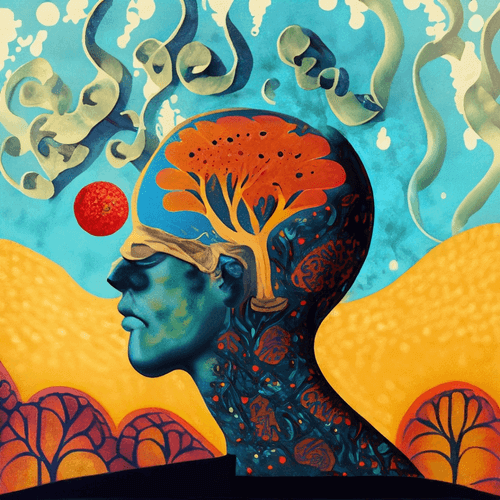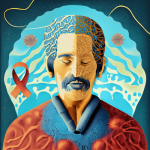Cancer is a subject often encircled by myths and misinformation, causing uncertainty and apprehension. To assist individuals in distinguishing between reality and fiction and making well-informed health choices, we address common cancer myths. These include misconceptions such as the notion that cancer invariably results in fatality and the belief that solely elderly individuals are susceptible to cancer. By looking into the accuracy of these myths, we delve into valuable insights regarding survival rates, risks associated with age, as well as the significance of dietary factors in cancer prevention and treatment.
We invite you to join us as we elucidate the realities and debunk the myths surrounding cancer.
What are Cancer Myths?
Cancer myths refer to widespread misconceptions and misinformation regarding the disease, treatment options, and prevention methods. These myths carry significant implications for public health and awareness. It is imperative to educate the public about these myths through reliable sources and trustworthy information to enhance health literacy and enablement.
Effectively addressing cancer myths enables individuals to make informed decisions about their health, thereby leading to improved outcomes. These myths often propagate due to a lack of accurate information or an incomplete understanding of the intricate nature of cancer. Through educational initiatives and awareness campaigns, the public can attain a clearer understanding of the disease, its treatments, and preventive measures. Dispelling prevalent misconceptions enables individuals to seek proper medical guidance and adhere to evidence-based practices, consequently enhancing overall public health outcomes.
Myth #1: Cancer is a Death Sentence
One of the prevalent misconceptions surrounding cancer is the belief that it invariably equates to a terminal diagnosis, a notion that is far from accurate in light of the advancements made in early detection, diagnosis, and the range of treatment modalities available.
Research has unequivocally demonstrated a consistent decline in mortality rates across various types of cancer owing to enhanced screening techniques and tailored therapeutic interventions. Notably, the 5-year survival rate for breast cancer has seen a notable increase from approximately 75% to over 90% in recent decades. This positive trend underscores the collaborative efforts of healthcare practitioners, researchers, and patient advocacy organizations in striving for improved patient outcomes and enhanced quality of life for individuals grappling with cancer diagnoses.
Debunking the Myth and Understanding Survival Rates
Comprehending survival rates and the determinants that contribute to a more favorable prognosis can dispel the misconception that cancer invariably leads to a fatal outcome.
Studies indicate that advancements in medical treatments have markedly enhanced outcomes for numerous cancer patients. Notably, recent research indicates that individuals who received prompt diagnosis and underwent targeted therapy exhibited a 5-year survival rate exceeding 70%. This underscores the critical role of regular screenings and timely medical interventions in effectively managing cancer.
Furthermore, anecdotal evidence from individual cases showcases inspiring narratives of individuals who not only survived cancer but also thrived following their diagnosis, underscoring the feasibility of leading a gratifying life post-cancer.
Myth #2: Only Older People Get Cancer
The misconception that cancer primarily affects older individuals disregards epidemiological data and statistical evidence indicating that cancer can impact individuals across all age groups, including children and young adults.
Cancer is a condition that transcends age demographics. While the likelihood of developing specific types of cancer does indeed rise with advancing age, it is crucial to acknowledge that cancer can manifest at any point in an individual’s life.
Recent epidemiological studies have revealed a rise in the incidence of cancer diagnoses among younger demographics. While genetic predisposition plays a substantial role in cancer etiology, lifestyle choices such as tobacco use, poor dietary habits, and sedentary behavior also contribute to the susceptibility to the disease.
Timely detection and diagnosis are paramount for individuals of all age brackets to facilitate prompt and efficacious medical intervention.
Dispelling the Myth and Examining Age-Related Risks
Analyzing age-related risks and comprehending the epidemiology of cancer can serve to dispel the misconception that cancer solely affects older individuals. While it is accurate that the likelihood of cancer onset rises with age, it is crucial to acknowledge that cancer can impact individuals of varying age groups.
Recent epidemiological data indicates a notable increase in cancer incidence among younger populations. Genetic predispositions, environmental factors, lifestyle choices, and exposure to carcinogens are all contributing factors to the development of cancer in younger individuals.
Early detection and diagnosis are pivotal in enhancing outcomes and survival rates across all age demographics, underscoring the significance of proactive screening initiatives and awareness campaigns.
Myth #3: Cancer is Contagious
The misconception that cancer is contagious represents a hazardous fallacy originating from misinformation and a deficiency in public health education.
Cancer stands as a multifaceted malady defined by the unregulated proliferation and dissemination of aberrant cells within the organism. It emerges from a confluence of genetic determinants, lifestyle selections, and environmental influences. The progression of cancer entails the accumulation of genetic anomalies disrupting the regular regulation of cells, which results in unbridled cellular division.
Although cancer cells have the capacity to infiltrate neighboring tissues and organs in the affected individual, they lack the transmissibility characteristic of contagious infections. This misapprehension frequently instigates fear and stigma, underscoring the pivotal role of health literacy in dispelling misconceptions and fostering the dissemination of accurate information. Trustworthy sources of information, such as esteemed medical institutions and research establishments, assume a critical function in enhancing public awareness regarding cancer and furnishing precise knowledge to counteract falsehoods.
Exploring the Truth and Understanding How Cancer Spreads
Understanding the mechanisms by which cancer disseminates within an individual’s body, as opposed to its transmission between individuals, is essential in dispelling the misconception that cancer is contagious.
The spread of cancer within the body occurs through a biological process known as metastasis. During metastasis, cancer cells detach from the primary tumor and migrate through the bloodstream or lymphatic system to other regions of the body, where they establish new tumors.
It is crucial to emphasize that cancer is not communicable through everyday interactions such as handshakes or meal sharing. Erroneous beliefs regarding cancer transmission can perpetuate stigma and anxiety. Therefore, there is a significant need for education and health literacy to debunk myths surrounding cancer, raise awareness, promote early detection, and facilitate effective treatment.
Myth #4: Alternative Medicine Can Cure Cancer
The misconception that alternative medicine can effectively treat cancer often diverts individuals from evidence-based treatment options, thereby presenting significant risks to their health.
Although it is understandable that individuals facing a cancer diagnosis may explore all potential avenues for treatment, it is imperative to underscore the criticality of relying on evidence-based research and credible sources when making healthcare decisions.
The insufficient scientific evidence supporting alternative therapies as a cancer cure underscores the importance of not solely relying on unproven methods. Doing so may not only delay or exacerbate the outcomes of conventional treatment but also subject patients to serious health hazards. Choosing unverified alternatives over proven conventional treatments has the potential to compromise patients’ well-being and overall health.
Evaluating the Evidence and Risks of Alternative Treatments
It is imperative to assess the evidence and comprehend the potential hazards linked to alternative treatments when considering options for cancer care.
A variety of alternative therapies, spanning from herbal remedies to energy healing techniques, have garnered favor among individuals seeking supplementary avenues for addressing cancer. While certain patients may perceive these treatments as advantageous for alleviating symptoms and enhancing overall health, it is paramount to exercise prudence. In the absence of substantial evidence substantiating their effectiveness, these alternative therapies could present substantial risks and financial constraints. By advocating for research grounded in evidence and seeking guidance from reputable sources, individuals can navigate the intricate realm of cancer care with heightened discernment and assurance.
Myth #5: Superfoods Can Prevent or Cure Cancer
The idea that superfoods possess the ability to prevent or cure cancer is a widespread misconception that often oversimplifies the intricate connection between diet and cancer.
While certain foods such as berries, leafy greens, and nuts may provide health benefits, research underscores the importance of a comprehensive approach to cancer prevention through overarching dietary patterns. Scientific investigations have demonstrated that a well-rounded diet rich in fruits, vegetables, whole grains, and lean proteins plays a critical role in diminishing the likelihood of cancer.
Lifestyle components like regular physical exercise, maintaining a healthy weight, and abstaining from tobacco and excessive alcohol consumption are equally pivotal in the prevention and treatment of cancer. Health literacy serves as a fundamental tool in navigating the plethora of dietary information available, enableing individuals to make informed decisions conducive to their overall well-being.
Examining the Role of Diet in Cancer Prevention and Treatment
The examination of the role of diet in cancer prevention and treatment necessitates a thorough comprehension of the intricate interplay among nutrients, lifestyle adjustments, and overall well-being. Research findings demonstrate that specific dietary patterns abundant in fruits, vegetables, whole grains, and lean proteins can diminish the likelihood of cancer development and enhance treatment efficacy. The integration of anti-inflammatory foods, such as turmeric and green tea, also holds promise in potentially mitigating the risk of cancer progression.
The maintenance of a healthy weight through a well-rounded diet and consistent physical activity is paramount in the management of cancer. Proficiency in health literacy significantly enables individuals to make educated choices regarding their dietary preferences and lifestyle practices as they confront cancer.
Myth #6: Only Women Get Breast Cancer
The misconception that only females are susceptible to breast cancer fails to acknowledge the significant reality that males can also be afflicted by this condition, albeit less frequently.
In men, the occurrence of breast cancer is uncommon, constituting less than 1% of all cases. Risk factors for male breast cancer encompass genetic mutations such as BRCA2, a family history of breast cancer, exposure to radiation, liver disease, and hormonal imbalances.
Timely detection is paramount for effective treatment, as male breast cancer is frequently diagnosed in advanced stages due to reduced awareness and infrequent screening practices. Treatment modalities for male breast cancer mirror those available for females, encompassing surgical procedures, radiation therapy, chemotherapy, hormone therapy, and targeted therapy.
The dissemination of public health information is pivotal in dispelling misconceptions and enhancing knowledge regarding male breast cancer, underscoring the significance of early identification and immediate medical intervention.
Breaking Down the Myth and Understanding Male Breast Cancer
Dispelling the misconception that breast cancer exclusively affects women necessitates a comprehensive understanding of the risk factors, diagnostic procedures, and treatment modalities associated with male breast cancer.
Male breast cancer, while comparatively rare in occurrence when juxtaposed with female breast cancer, can manifest due to a spectrum of precipitating factors, including but not limited to familial history of breast cancer, genetic mutations such as BRCA2, exposure to ionizing radiation, and perturbations in hormonal levels.
Typical indicators of male breast cancer encompass the presence of a palpable lump or swelling within the breast tissue, alterations in the nipple’s appearance, or nipple discharge. The diagnostic process commonly involves a physical examination, diagnostic imaging techniques like mammography or ultrasonography, and a histological biopsy to definitively ascertain the existence of malignant cells.
Treatment modalities may encompass surgical interventions, chemotherapeutic regimens, radiation therapy, hormone manipulation, or targeted therapy, the selection of which is contingent upon the cancer’s staging and specific histopathological attributes. Survival rates among male individuals afflicted with breast cancer are contingent upon the stage of diagnosis, with prompt identification correlating with more favorable prognostic outcomes.
The dissemination of public health education and enhancements in health literacy are instrumental in heightening consciousness regarding male breast cancer, fostering early detection initiatives, and consequently ameliorating the prognostic outlook and quality of life for impacted individuals.
Frequently Asked Questions
1. What are some common cancer myths that need to be debunked?
Some common cancer myths include the belief that sugar feeds cancer, that cell phones cause cancer, and that wearing a bra can increase the risk of breast cancer.
2. Is there any truth to the myth that certain foods can cure cancer?
No, there is no scientific evidence to support the claim that any specific food can cure cancer. A healthy diet can help prevent certain types of cancer, but it cannot cure the disease once it has developed.
3. Can using natural or alternative treatments be just as effective as traditional cancer treatments?
While some natural or alternative treatments may have benefits for cancer patients, they are not proven to be as effective as traditional treatments such as chemotherapy, radiation, and surgery. It is important to discuss all treatment options with a doctor before making any decisions.
4. Do cancer screenings always detect cancer in its early stages?
No, cancer screenings are not 100% accurate and can sometimes miss early signs of cancer. This is why it is important to continue getting regular screenings and to report any changes in your health to your doctor.
5. Can cancer be caused by a weak immune system?
While a weakened immune system can make a person more susceptible to certain illnesses, there is no evidence to suggest that it directly causes cancer. Many factors, such as genetics and environmental exposures, play a role in the development of cancer.
6. Is it true that cancer only affects older people?
No, cancer can affect people of all ages. While the risk of developing cancer does increase with age, it is not exclusive to older individuals. It is important for people of all ages to maintain a healthy lifestyle and undergo regular cancer screenings.




